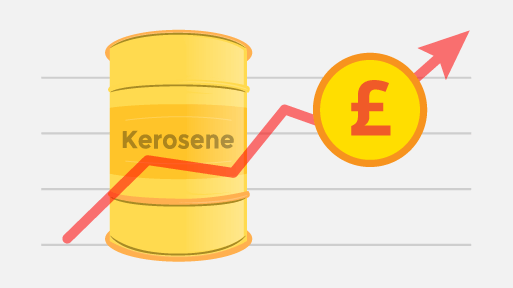How is this calculated?
We compare heating oil suppliers and take their lowest price.
We do this for every postcode district, using this information to calculate the average UK
heating oil price available though our site (including VAT at 5%).






There are many factors that contribute to fluctuations of heating oil prices:
• Increase in demand • OPEC • Conflict in oil producing countries • VAT rates • Distribution and delivery costs • Refining costs • Exchange rates • Weather • Crude oil prices.
Use our price chart to see, at a glance, the current price trend without having to spend hours researching.


With hundreds of participating suppliers across the nation, we can find you the cheapest heating oil prices in East Anglia, Lincolnshire, Somerset, Gloucestershire,or anywhere else in England. Get a quote to find a great price in your area.
To start your quote, enter your details in the form to tell us where you are in the country, what type of oil you use and how much you need.
We will compare local and national oil providers, guaranteeing you our best price for your area. You will only see the cheapest option.
If you're happy, then you're just a few clicks away from ordering your oil. Either pay in one lump sum, or use your Payment Plan balance to cover some or all of the cost.
You can then sit back and relax with complete peace of mind. Your delivery on its way and your account ready for your next top-up in seconds.
Use our chart above to see the current price per litre for Kerosene in England. If you’re ready to buy, get a quote to see the exact price in your postcode.
In some instances, it can be cheaper to buy 1000 litres instead of 500. This will depend on what suppliers are pricing in your area. Run a quote to find today’s oil price in your area.
You can now buy 300L of heating oil in some parts of England, meaning you can take advantage of great prices even when you don’t have much room in your tank.
Many factors impact prices, from weather to external political events. Usually we see prices fall in summer months when there is much lower demand, and increase when it’s gets colder during winter months.